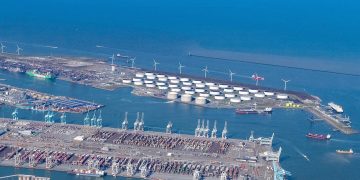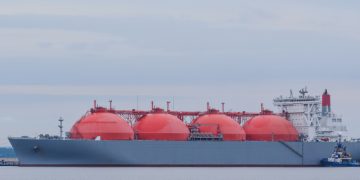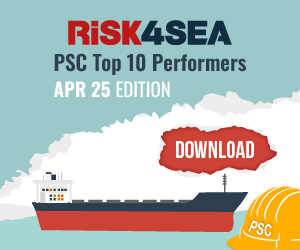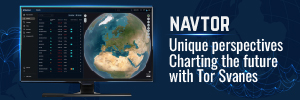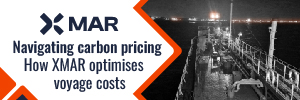Windward’s latest report finds that Q1 2025 featured the highest number of sanctioned vessels since 2022 and the largest number of both new and alignment designations of maritime companies by global regulators since early 2023.
According to the report, a significant 88% of these newly sanctioned vessels are tankers, highlighting a clear regulatory focus on this category across global jurisdictions. In addition, Q1 2025 also marked the highest number of new and alignment designations of maritime companies by global regulators since the peak of such activity in early 2023. Notably, 70% of the newly sanctioned companies are located in just five countries: Hong Kong, Seychelles, China, Russia, and the Marshall Islands.

GPS Jamming
- The average distance vessels “jump” to when their AIS is jammed grew from 600 km in Q4 2024, to a staggering 6,300 km in Q1 2025
- This distance completely disrupts trade and safety measures at sea, making it nearly impossible to track vessels within any realistic or relevant geographical vicinity
- Three new jamming hubs were detected by Windward’s dedicated GPS jamming team and models in Q1 2025:
- Sudan in the Red Sea – from 0 affected vessels in Q4 2024, to more than 180 affected vessels in Q1 2025
- Djibouti in the Gulf of Aden – from 0 affected vessels in Q4 2024, to more than 30 affected vessels in Q1 2025
- From the Black Sea to the Gulf of Guinea – from 0 affected vessels in Q4 2024, to more than 120 affected vessels in Q1 2025
Shadow fleets
- The Comoros flag seems to be on the rise again in Q1 2025, with a 16% increase in flag changes to Comoros since Q4 2024
- A similar increase was last seen in Q1 of 2024, also following sanctions released for the Russia/Ukraine 2-year mark

Tariffs’ effect on trade lanes
- Tanker-driven trade showed steady declines from late 2023, followed by a sharp disruption in March 2025 — likely tied to energy-related policy shifts
- A stable pattern through 2024 gave way to a sudden drop in March 2025, driven almost entirely by reduced tanker activity — potentially linked to oil tariffs
- After a buildup in late 2024 and early 2025 — likely front-loading ahead of expected tariffs — both container and bulk flows dropped sharply in March 2025

General learnings
- March 2025 marks a clear disruption across all major U.S. trade lanes, with significant declines in port calls – particularly tanker- and container-heavy routes – signaling the material impact of evolving tariff enforcement
- Tanker flows are the leading indicator for North American trade (U.S.–Mexico, U.S.–Canada); changes in oil-related policies or tariffs have a direct and disproportionate effect on total trade volume
- In U.S.–China trade, the data reflects preemptive shipping behavior (front-loading), especially for containers and bulk goods – highlighting how businesses adjust operational timing in anticipation of policy changes.




















